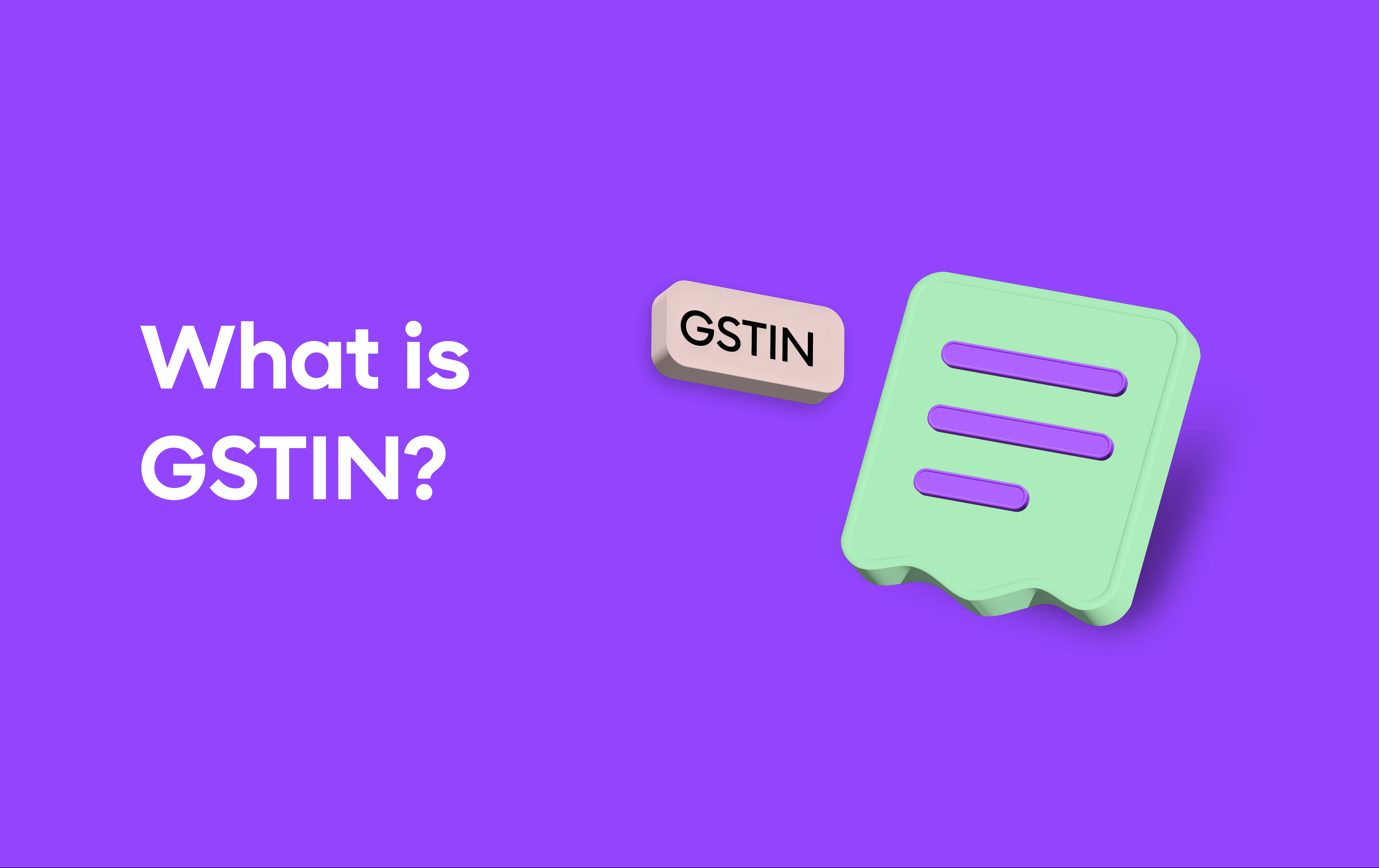Looking for the right HSN or SAC code for your business? Try our free HSN & SAC Code Finder tool to classify your goods and services accurately.
HSN & SAC Finder
Find HSN / SAC Codes for Your Goods & Services
| Chapter | Description | HSN Code |
|---|
India’s Goods and Services Tax (GST) system relies on a structured classification of goods and services to ensure accurate taxation. The Harmonized System of Nomenclature (HSN) and Service Accounting Codes (SAC) are at the heart of this classification. These codes standardize the tax structure, enabling uniformity across businesses and industries.
What Are HSN and SAC Codes?
HSN Code: Harmonized System of Nomenclature
The HSN code is an internationally recognized system created by the World Customs Organization (WCO) to classify goods systematically. With over 5,000 commodity groups, this code is essential for streamlining global trade and taxation.
In India, HSN codes are adapted for GST compliance. Initially structured with six digits, India extends this to eight for finer classification.
Structure of HSN Code
- First 2 digits: Chapter (e.g., textiles fall under Chapter 61).
- Next 2 digits: Heading within the chapter.
- Next 2 digits: Subheading for further classification.
- Last 2 digits: (Optional) Added in India for detailed identification.
HSN Code Example
Cotton T-Shirts: 61091000
- 61: Articles of apparel and clothing accessories, knitted or crocheted.
- 09: T-shirts, singlets, and other vests.
- 10: Made of cotton.
- GST Rate: 12%

The HSN structure contains 21 sections, with 99 Chapters, about 1,244 headings, and 5,224 subheadings. Each Section is divided into Chapters. Each Chapter is divided into Headings. Each Heading is divided into Sub Headings. Section and Chapter titles describe broad categories of goods, while headings and subheadings describe products in detail.
This detailed classification allows businesses to accurately determine tax (GST) rates for their goods, while tax authorities benefit from simplified and efficient tracking of goods and services, reducing disputes and improving compliance.
Chapter-wise Distribution of Goods Using HSN Codes
| Chapter | Commodities |
| Section I Animals and Animal Products | |
| Chapter 1 | Animals |
| Chapter 2 | Meat and edible offal |
| Chapter 3 | Fish, molluscs, crustaceans, and other aquatic invertebrates |
| Chapter 4 | Dairy produce, birds’ eggs, honey and other edible products of animal origin |
| Chapter 5 | Other products of animal origin |
| Section II. Vegetables and Vegetable Products | |
| Chapter 6 | Live trees and plants, bulbs, roots, cut flowers and ornamental foliage |
| Chapter 7 | Edible vegetables, certain roots and tubers |
| Chapter 8 | Edible fruit and nuts, the peel of citrus fruits or melons |
| Chapter 9 | Tea, coffee, mate and spices |
| Chapter 10 | Cereals |
| Chapter 11 | Milling products, malt, wheat gluten, starches, and inulin |
| Chapter 12 | Oil seeds and oleaginous fruits, grains, straw and fodder, seeds and fruit |
| Chapter 13 | Lac, gum, resin, and other saps and extracts |
| Chapter 14 | Vegetable plaiting materials, and vegetable products not specified elsewhere |
| Section III. Animal or Vegetable Oils, Their Cleavage Products, Waxes, and Prepared Edible Fats | |
| Chapter 15 | Animal or vegetable oils, their cleavage products, waxes, and prepared edible fats |
| Section IV. Prepared Food, Beverages, Spirits, Tobacco and Tobacco Substitutes | |
| Chapter 16 | Preparation of meat, fish, or crustaceans |
| Chapter 17 | Sugar and sugar confectionery |
| Chapter 18 | Cocoa and cocoa preparations |
| Chapter 19 | Preparations of cereals, starch, flour, milk, and pastry products |
| Chapter 20 | Preparation of vegetables, fruits, nuts, or plant parts |
| Chapter 21 | Miscellaneous edible preparations |
| Chapter 22 | Beverages, vinegar, and spirits |
| Chapter 23 | Residue and food waste, prepared animal fodder |
| Chapter 24 | Tobacco and tobacco substitutes that are manufactured |
| Section V. Minerals | |
| Chapter 25 | Salt, earths, and stones, sulfur, plastering material, lime, and cement |
| Chapter 26 | Ores, slag, and ash |
| Chapter 27 | Mineral fuel, mineral oils and products of their distillation, mineral waxes |
| Section VI. Chemical Products or of Allied Industries | |
| Chapter 28 | Inorganic chemicals, organic or inorganic compounds of precious metals |
| Chapter 29 | Organic chemicals |
| Chapter 30 | Pharmaceutical products |
| Chapter 31 | Fertilizers |
| Chapter 32 | Tanning or dyeing extracts, tannins and their derivatives |
| Chapter 33 | Essential oils and resinoids, cosmetic or toilet preparations |
| Chapter 34 | Soap, washing preparations, organic surface-active agents |
| Chapter 35 | Albuminoidal substances, glues, enzymes |
| Chapter 36 | Explosives, pyrotechnic products |
| Chapter 37 | Photographic or cinematographic goods |
| Chapter 38 | Miscellaneous chemical products |
| Section VII. Plastics, Rubber, and Articles Thereof | |
| Chapter 39 | Plastics and plastic articles |
| Chapter 40 | Rubber and rubber articles |
| Section VIII. Raw Hides and Skins, Furskins and Articles Thereof, Leather, and Related Goods | |
| Chapter 41 | Raw hides and skins (other than furskins) and leather |
| Chapter 42 | Articles made of leather |
| Chapter 43 | Furskins and artificial fur and articles thereof |
| Section IX. Wood and Wooden Articles, Wood Charcoal, Cork and Articles of Cork, Basket Ware and Wickerwork, Manufacturers of Straw, Esparto or Other Plaiting Material | |
| Chapter 44 | Wood and wooden articles, wood charcoal |
| Chapter 45 | Cork and articles of cork |
| Chapter 46 | Manufactures of straw, esparto or other plaiting materials, basket ware and wickerwork |
| Section X. Pulp of Wood or Other Fibrous Cellulosic Material, Recovered Paper or Paperboard (Waste and Scrap), Paper and Paperboard and Articles Thereof | |
| Chapter 47 | Pulp of wood or other fibrous cellulosic material, recovered paper or paperboard (waste and scrap) |
| Chapter 48 | Paper and paperboard, articles made of paper pulp, or articles made of paper or paperboard |
| Chapter 49 | Printed books, pictures, newspapers, and other products of the printing industry |
| Section XI. Textile and Textile Articles | |
| Chapter 50 | Silk |
| Chapter 51 | Wool, fine or coarse animal hair, horse hair yarn and other woven fabrics |
| Chapter 52 | Cotton |
| Chapter 53 | Other vegetable textile fibres, paper yarn and woven fabrics made of paper yarn |
| Chapter 54 | Man-made filaments |
| Chapter 55 | Man-made staple fibres |
| Chapter 56 | Wadding, felt and nonwovens, twine, cordage, special yarns, ropes, and cables and articles thereof |
| Chapter 57 | Carpets and textile floor coverings |
| Chapter 58 | Special woven fabrics, lace tapestries, tufted textile fabrics, trimmings, and embroidery |
| Chapter 59 | Impregnated, covered, coated, or laminated textile fabrics, textile articles made for industrial use |
| Chapter 60 | Knitted or crocheted fabrics |
| Chapter 61 | Articles of apparel and clothing accessories that are knitted or crocheted |
| Chapter 62 | Articles of apparel and clothing accessories that are not knitted or crocheted |
| Chapter 63 | Other made up textile articles, sets, worn clothing and textile articles, and rags |
| Section XII. Footwear, Headgear, Umbrellas, Walking Sticks and Seat Sticks, Whips, Riding Crops and Parts Thereof, Artificial Flowers, Articles of Human Hair, Prepared Feathers and Articles Made Thereof | |
| Chapter 64 | Footwear, gaiters, etc., and the parts of such articles |
| Chapter 65 | Headgear and parts thereof |
| Chapter 66 | Umbrellas and sun umbrellas, walking sticks, seat sticks, riding crops and parts thereof, and whips |
| Chapter 67 | Prepared feathers and down and articles made thereof, artificial flowers, and articles made of human hair |
| Section XIII. Articles Made of Stone, Plaster, Asbestos, Cement, Mica, or Other Similar Materials, Glass and Glassware, Ceramic Products | |
| Chapter 68 | Articles made of stone, plaster, cement, asbestos, mica or similar materials |
| Chapter 69 | Ceramic products |
| Chapter 70 | Glass and glassware |
| Section XIV. Natural or Cultured Pearls, Precious Metals Clad With Precious Metal and Articles Thereof, Precious or Semi-Precious Stones, Coins, Imitation Jewellery | |
| Chapter 71 | Natural or cultured pearls, precious metals, metals that are clad with precious metal and articles thereof, precious or semi-precious stones, imitation jewellery, coins |
| Section XV. Base Metal and Articles Made of Base Metal | |
| Chapter 72 | Iron and steel |
| Chapter 73 | Articles made of iron or steel |
| Chapter 74 | Copper and articles thereof |
| Chapter 75 | Nickel and articles thereof |
| Chapter 76 | Aluminium and articles thereof |
| Chapter 77 | (Reserved for possible future use) |
| Chapter 78 | Lead and articles thereof |
| Chapter 79 | Zinc and articles thereof |
| Chapter 80 | Tin and articles thereof |
| Chapter 81 | Other base metals, cermets, and articles thereof |
| Chapter 82 | Tools, implements, spoons and forks, cutlery, of base metal, and parts thereof |
| Chapter 83 | Miscellaneous articles made of base metal |
| Section XVI. Machinery and Mechanical Appliances, Electrical Equipment and Parts Thereof, Sound Reproducers and Recorders, Television Image and Sound Reproducers and Recorders, and Parts and Accessories of Such Articles | |
| Chapter 84 | Nuclear reactors, machinery and mechanical appliances, boilers, and parts thereof |
| Chapter 85 | Electrical machinery and equipment and parts thereof, sound reproducers and recorders, television image and sound reproducers and recorders, and parts and accessories of such articles |
| Section XVII. Vehicles, Aircraft, Vessels, and Associated Transport Equipment | |
| Chapter 86 | Tramway or railway locomotives, tramway or railway track fixtures and fittings and parts thereof, rolling stock and parts thereof, mechanical (including electro-mechanical) traffic signalling equipment of all kinds |
| Chapter 87 | Vehicles other than tramway or railway rolling stock, and parts and accessories thereof |
| Chapter 88 | Aircraft, spacecrafts, and parts thereof |
| Chapter 89 | Ships, boats and floating structures |
| Section XVIII. Optical, Photographic, Cinematographic, Checking, Measuring, Precision, Medical or Surgical Instruments and Apparatus, Musical Instruments, Clocks and Watches, Parts and Accessories Thereof | |
| Chapter 90 | Optical, photographic, cinematographic, checking, measuring, precision, medical or surgical instruments and apparatus, parts and accessories thereof |
| Chapter 91 | Clocks and watches and parts thereof |
| Chapter 92 | Musical instruments, and parts and accessories of such articles |
| Section XIX. Arms and Ammunition, Parts and Accessories Thereof | |
| Chapter 93 | Arms and ammunition, parts and accessories thereof |
| Section XX. Miscellaneous Manufactured Articles | |
| Chapter 94 | Furniture, mattresses, mattress supports, bedding, cushions and similar stuffed furnishing, lamps and lighting fittings, which are not elsewhere specified or included, illuminated signs and name-plates and the like, prefabricated buildings |
| Chapter 95 | Toys, games and sports requisites, parts and accessories thereof |
| Chapter 96 | Miscellaneous manufactured articles |
| Section XXI. Works of Art, Collectors’ Pieces and Antiques | |
| Chapter 97 | Works of art, collectors’ pieces and antiques |
| Chapter 98 | Project imports, laboratory chemicals, personal imports by air or post, passenger’s baggage, ship stores |
| Chapter 99 | Services |
SAC Code: Service Accounting Code
SAC classifies services under GST. These codes mirror the structure of HSN codes but are specific to services.
Structure of SAC Code
- First 2 digits: Always ‘99’ (indicating services).
- Next 2 digits: Major nature of the service.
- Last 2 digits: Specific service within that category.
SAC Example
Commercial Training And Coaching Services: 999293
- 99: Represents services.
- 92: Training and coaching services.
- 93: Specific service.
- GST Rate: 18%
Importance of HSN and SAC Codes in GST
- Uniform taxation: These codes ensure consistent tax rates across India, reducing discrepancies and disputes.
- Ease of compliance: Automated systems rely on these codes to streamline GST filing and reconciliation.
- International alignment: HSN codes align India’s tax system with global trade practices, enhancing cross-border commerce.
- Reduced manual errors: Businesses avoid misclassification issues by using predefined codes.
Mandatory Usage of HSN and SAC Codes
As of April 1, 2021 (CGST notification number 78/2020 dated 15th October 2020), the declaration of HSN/SAC codes in GST invoices is mandatory based on the annual turnover:
| Annual Turnover* | HSN Digits for B2B Invoices | HSN Digits for B2C Invoices |
| Up to ₹5 crore | 4 (Mandatory) | 4 (Optional) |
| Above ₹5 crore | 6 (Mandatory) | 6 (Mandatory) |
*Annual aggregate turnover for the previous financial year, i.e., for reporting invoice in FY 2021-22, turnover to be referred must be of FY 2020-21.
For exports and imports, an 8-digit HSN code is compulsory to align with international trade standards.
Common Errors and Best Practices
Errors to Avoid
- Incorrect classification: Using the wrong HSN/SAC code can lead to penalties and delayed refunds. Example: Misclassifying “Cotton T-Shirts” (61091000) under a generic textile category.
- Omission of codes: Failure to include HSN/SAC codes in invoices can invalidate GST filings.
- Non-compliance with updates: Codes and GST rules are periodically updated.
Best Practices
- Use GST-compliant software to auto-generate codes.
- Refer to the official GST portal for updates on classifications.
- Consult with tax professionals for ambiguous categories.
Global Relevance of HSN Codes
HSN codes are used by over 200 countries, covering more than 98% of global merchandise trade. India, a member of the WCO since 1971, aligns its classification system with international standards while incorporating specific adaptations.
Key Benefits:
- Simplified trade documentation.
- Standardized tariff structures.
- Enhanced transparency in customs processes.
HSN and SAC codes form the backbone of India’s GST framework, ensuring uniformity and compliance in taxation. By understanding and correctly applying these codes, businesses can simplify GST filings, reduce disputes, and align with international trade practices.
For businesses operating in India, staying updated with the latest HSN/SAC classifications is not just a regulatory requirement but a strategic advantage. Leverage these codes to enhance accuracy, streamline operations, and contribute to a robust compliance ecosystem.





